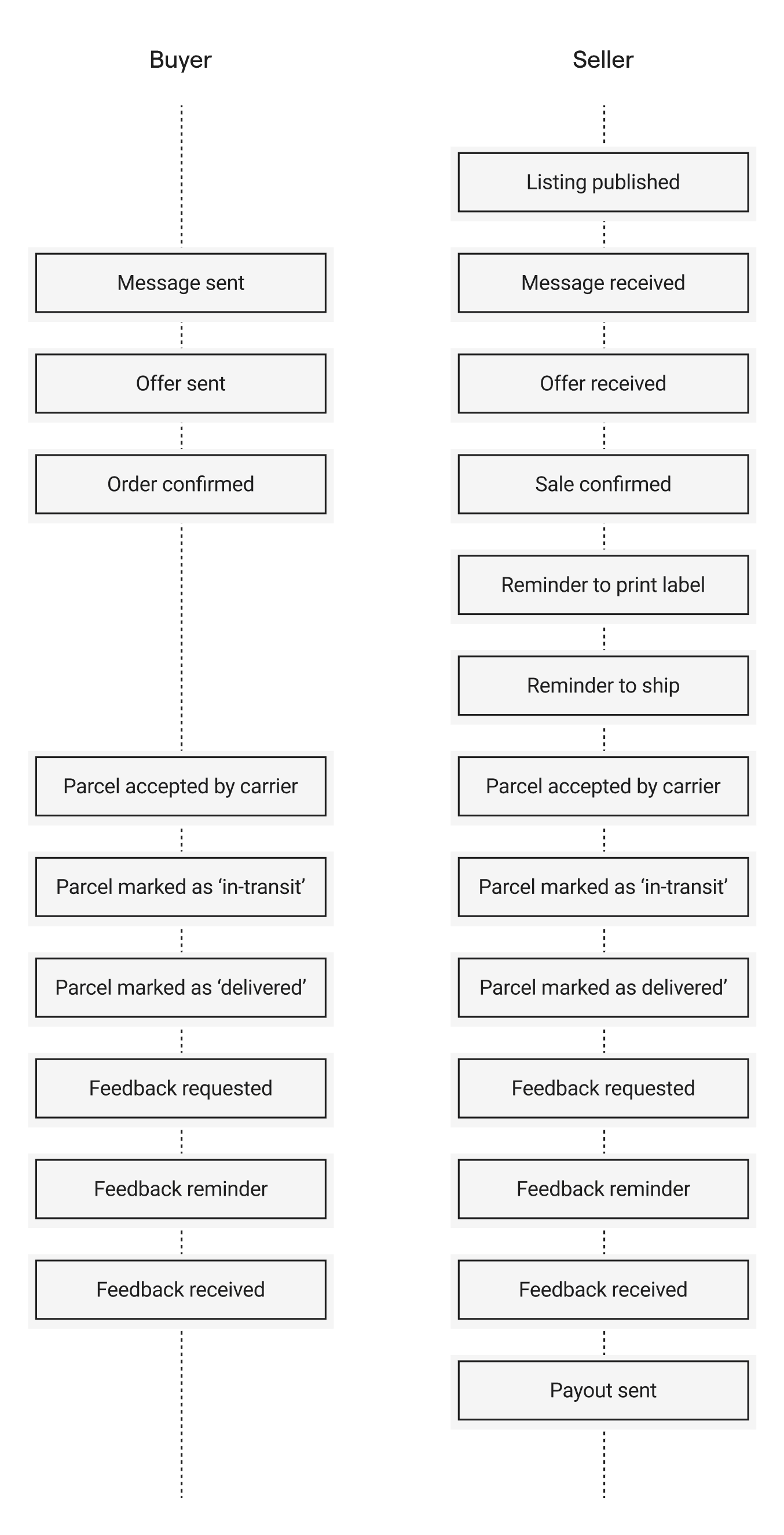Jul 2, 2024
If you are building or operating a marketplace (like eBay, Airbnb, etc), you already know that marketplaces are operate around trust and safety. But how do marketplaces build and maintain trust between buyers and sellers? We'll explore this in the article below.
How trust is created in online marketplaces
Trust lies at the core of successful marketplace transactions.
When an online marketplace makes its first debut, trust is at its lowest. Nobody wants to be the first person to use a product or service. Trust manifests as more of the community signs on, leaves reviews, and advocates for the product/service within their circles. From here, the cycle continues until the online marketplace becomes a household name.
The product of these organic interactions can be referred to as network effects. Network effects are the outcome of value being added to the product or service as more people join in. Consider the evolution of the telephone. No matter how technologically sophisticated a phone can become, it only has value if other people have one too. The success of the telephone as a product relied on network effects for its success.
If network effects are the outcomes that propel online marketplaces into success, community trust is the initial cause. Without a vested interest between the buyer and seller, the initial transaction will not occur, and progress is halted. The buyer must trust that the item or service will be as described, and the seller must deliver on its promises.
How trust is maintained in online marketplaces
As shown by the success of online marketplaces in the last decade, community trust can grow when the platforms that connect the users are safe and efficient to use. Online marketplaces can protect and maintain community trust by minimizing the perceived risk for their users. Marketplace platforms operate and provide value by making it easier for users to trust each other.
Leading online marketplaces provide identification and insurance functionality that minimize risk from the beginning to the end of the user experience. Identity verification can be carried out in-house or by a third-party service, such as Checkr or even through merchant onboarding on Stripe. Airbnb, for example, requires ID verification for account creation for both the host and the guests and Bellhop vets each of their movers through multiple channels before letting a Bellhop into a home. Insurance protects marketplace users with higher liability risks. Airbnb, Turo, and Outdoorsy all offer protection plans that can be catered to match the user’s confidence levels, or they can be included at no additional cost.
Review systems are also a powerful tool that can vary in depth and detail. To me, there is no greater comfort than scrolling through pages of positive reviews before entering my credit card information. Many marketplaces like eBay and Etsy have a feedback system that lets buyers and sellers take a deep dive into user reviews by displaying the role of the user (buyer/seller), rating type (positive/negative), the review itself, and the order that the review is referring to. This level of granularity provides the user with both a value rating and its context. Airbnb uses blind reviews (the host and guest can’t view each other’s reviews until both reviews have been submitted) that minimize emotional responses and helps to eliminate bias. Both feedback systems help users make informed and confident financial decisions.
Trust levels can also be maximized by offering timely customer support, secure payment processing options, satisfaction guarantees, a defense against bots and scams, and arguably most importantly, a secure way (ie. a messenger tool) for buyers and sellers to connect and work together.
Communication is the key
As with real-life interactions, communication is the key to building and maintaining trust within marketplaces. As shown above, communication lies throughout the entire lifecycle of a transaction from making an offer to writing a review.
This means the marketplace itself serves as the facilitator for communication. This means notifications (particularly, emails) are often used throughout the entire transaction to keep both sides in the loop. For example, key events during a transaction may include:

If you are running a marketplace, learn why we believe emails during these key events are the 'glue of UX' for marketplaces.
Final thoughts
Trust is the fuel that drives online marketplace success and part of that trust comes from the facilitation of communication by a marketplace. Online marketplaces that prioritize trust will be rewarded with self-sustaining communities of buyers and sellers that are committed to creating value throughout their marketplace.
This article was originally published on Marketbase (a Waypoint product).

